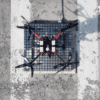News
Software Supports Drone Pilots with Disabilities
Drones are now being modified to be made available to people with sensory, cognitive and motor impairments thanks to the efforts of researchers Jeremie Garcia, Yannik Jestin, Luv Chevrier and Anke M. Brock at the Universite’ of Toulouse, France. Their research paper published in the Extended Abstracts of the 2019 CHI Conference on Human Factors in Computing Systems describes two studies they conducted that involved people with sensory, cognitive and motor impairments flying drones as a leisure activity.
Taking into consideration the difficulties faced by people with disabilities due to lack of perceptual and motor skills necessary for drone flying, researchers designed HandiFly, a software for piloting drones which is adaptable to users’ abilities.

P1 using makey makey and conductive zones on the table as directional arrows
Drone operation requires the pilots to have perceptual skills (distance, altitude, orientation) and motor skills (precision, movement) which could be challenging for people with motor and cognitive impairments.

P3 using a game controller with a single hand
To enable people with disabilities to fly drones the researchers worked with ELHEVA, an association for people with disabilities, and the Artilect FabLab which were already organizing drone piloting activities for disabled people and needed support for designing interactions.

P4 trying to land the drone on the box
Researchers conducted a first workshop with four participants and two therapists to understand their needs and derive an adaptation design space. The special people participating in these trials comprised- a 10 year old wheel chair bound girl with congenital motor and cognitive impairments and attention and speech disorders; a 20 years old adult male with congenital cognitive impairments. He has a limited attention span and 3D visual perception difficulties; another 20 year old adult male with mild cognitive deficits and congenital motor impairments affecting his hands but an experienced video game player and the fourth participant- a 45 years old adult male Wheel chair with cognitive, speech and motor impairments following a recent accident.
Researchers then designed HandiFly, a prototype application that can adapt the degree of control to users’ abilities by taking advantage of the Paparazzi autopilot. In a second workshop with the same participants, HandiFly allowed the participants to fly drones with greater success and satisfaction. The drone piloting workshops had been held for eight months. The companions and the therapists had already implemented contextual and material adaptations.
Understanding directions was challenging for the participants and they were provided support by placing one participant inside the flight space while wearing colored stickers on his body which corresponded to colored stickers on the remote.
A table was customized for ease of adjustment to the height of the wheel chairs of 2 of the participants. A support helped keep the remote in a pleasant position. Another participant used a custom made tablet hanging on his shoulders to put the remote and prevent wrist fatigue. All participants used longer sticks and/or with larger tips that were printed in 3D for a better grip.
Conclusion and perspectives
This work is a first step towards more accessible interfaces for drone piloting for special people. HandiFly supported the design of ad-hoc interactions by leveraging hardware, software and automation adaptations and operated based on the suggestions made by the participants, their companions and the therapists.
Researchers suggested further user-driven studies with more participants be conducted to collect more quantitative information and to refine the adaptation space. This work can have implications for Assistive Technologies particularly for interaction with automated systems during degraded conditions such as cognitive overload or perception problems.























